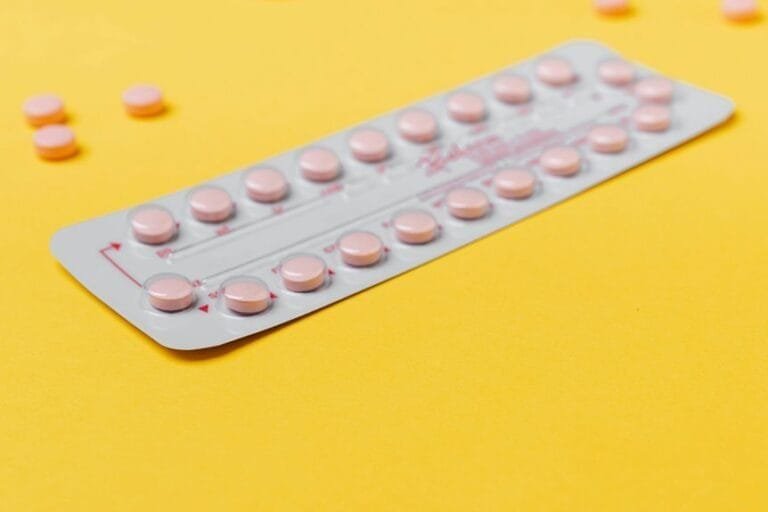Combining testosterone replacement therapy (TRT) with enclomiphene can effectively boost your testosterone levels while preserving fertility and testicular function. Enclomiphene works by blocking estrogen receptors, which promotes natural testosterone production through increased luteinizing hormone (LH) and follicle-stimulating hormone (FSH) levels. Clinical studies have shown that around 60-65% of men achieve normal testosterone levels using this approach. If you're curious about the safety profile and long-term considerations, further information awaits.
Key Takeaways
- Enclomiphene boosts testosterone levels while preserving sperm production and testicular function, crucial for maintaining male fertility.
- It enhances LH and FSH secretion, promoting natural testosterone production without compromising hormonal balance.
- Clinical research shows that 60-65% of men achieve normal testosterone levels with enclomiphene, particularly beneficial for overweight individuals.
- The safety profile of enclomiphene is generally favorable compared to traditional TRT, with fewer adverse effects reported.
- Long-term use requires regular monitoring and communication with healthcare providers to manage side effects and adjust dosages effectively.
Benefits of Combining Enclomiphene With TRT

When you combine enclomiphene with testosterone replacement therapy (TRT), you not only boost your testosterone levels but also support sperm production and maintain fertility.
This combination fosters hormonal synergy by increasing luteinizing hormone (LH) and follicle-stimulating hormone (FSH), essential for spermatogenesis. While TRT can reduce sperm count, enclomiphene helps preserve fertility through natural intratesticular testosterone production, ensuring testicular function and size are maintained. Additionally, it promotes natural testosterone production in the testes, which is crucial for enhancing reproductive health.
Moreover, it balances hormone levels, mitigating risks associated with excessive testosterone. By enhancing your body's inherent hormonal environment, this dual approach promotes both testosterone elevation and fertility preservation, making it particularly beneficial for men concerned about their reproductive health.
Therefore, this strategy provides an all-encompassing, effective treatment for hormonal challenges.
Mechanism of Action
Combining enclomiphene with testosterone replacement therapy (TRT) not only optimizes hormone levels but also involves specific mechanisms that enhance its effectiveness.
Enclomiphene acts by blocking estrogen receptors in the brain and pituitary gland, resulting in significant feedback disruption. This interruption diminishes the negative feedback loop exerted by estrogen on the hypothalamic-pituitary-gonadal axis, stimulating increased release of gonadotropin-releasing hormone (GnRH).
Consequently, higher GnRH levels elevate luteinizing hormone (LH) and follicle-stimulating hormone (FSH) secretion from the pituitary, promoting endogenous testosterone production in the testes.
Importantly, enclomiphene increases total and free testosterone within physiological ranges while maintaining testicular function and fertility, achieving a sophisticated balance between external supplementation and the body's innate hormone regulation. Additionally, studies indicate that enclomiphene effectively supports endogenous testosterone production in men with low testosterone levels, thereby enhancing overall treatment outcomes.
Safety Profile

When considering the safety profile of testosterone and enclomiphene, you'll encounter some common adverse effects, such as dizziness, headaches, and hot flashes, which typically remain mild and temporary. Close monitoring of these symptoms is essential to guarantee patient safety and mitigate potential risks. Understanding these factors can help you weigh the benefits against the risks of combined therapy effectively. Additionally, it's important to recognize that long-term safety of enclomiphene is still under investigation, highlighting the need for ongoing physician communication.
Common Adverse Effects
While Enclomiphene is generally well-tolerated, it can present several common adverse effects. Dizziness, affecting about 1% of users, can complicate dizziness management for some individuals.
Headaches, reported in 3% of cases, require timely headache relief strategies. Other mild and transient effects include hot flashes, fatigue, and acne. Hormonal fluctuations may lead to increased libido, mood swings, and even aggression.
Note that, while serious side effects like chest pain and vision changes are rare, they warrant immediate attention.
Importantly, Enclomiphene's safety profile is favorable compared to testosterone replacement therapy (TRT), as it doesn't suppress gonadotropin levels or negatively affect semen parameters, thereby avoiding common TRT-related concerns.
Monitoring and addressing these effects are essential for best outcomes.
Monitoring Requirements
How can patients secure the safe and effective use of Enclomiphene? Regular hormonal assessments are vital to monitor testosterone, estrogen, LH, and FSH levels, guaranteeing therapeutic goals are achieved while identifying hormonal imbalances.
By routinely checking these levels, you can inform necessary therapy adjustments, like alterations in dosage.
Beyond hormones, it's important to keep track of lipid profiles, blood pressure, and liver function tests such as ALT and AST. Monitoring PSA levels and hematocrit guarantees overall health and prostate safety.
Finally, maintaining open communication with your healthcare provider through regular follow-ups facilitates personalized treatment planning, enabling timely management of any adverse effects and optimizing your treatment outcomes for sustained benefits.
Efficacy in Testosterone Levels
The efficacy of enclomiphene in increasing testosterone levels is well-supported by clinical research, demonstrating marked advantages over traditional testosterone replacement therapies (TRT).
Enclomiphene optimizes testosterone by blocking estrogen at the hypopituitary axis, enhancing luteinizing hormone (LH) and follicle-stimulating hormone (FSH) levels.
Studies indicate that 60-65% of men achieved normal testosterone levels with an appropriate enclomiphene dosage, compared to only 15-35% with testosterone gels. The mean testosterone increase was 166 ng/dL, maintaining hormonal balance without suppressing LH or FSH, ensuring spermatogenesis.
Additionally, enclomiphene presents fewer adverse effects than TRT, including no significant drop in sperm count. This positions enclomiphene as a superior choice for testosterone optimization among men with secondary hypogonadism.
Long-Term Use Considerations

When considering long-term use of enclomiphene, you'll need to focus on effective side effect management while preserving hormonal balance.
Regular monitoring enables you to address any mild side effects promptly, ensuring they remain manageable.
Additionally, maintaining hormone levels can optimize your overall treatment outcomes and support your health objectives.
Side Effect Management
While considering long-term use of testosterone and enclomiphene, effective side effect management is essential to secure patient safety and treatment efficacy.
Focus on side effect reduction through regular monitoring of hormone levels, lipid profiles, and hematocrit levels.
Address common issues like headaches, nausea, and fatigue proactively with patient support strategies, including education on symptom management and clear communication about treatment expectations.
Be vigilant about serious side effects such as blood clots and ischemic stroke; make certain patients are aware of symptoms like sudden swelling or chest pain.
Tailoring dose adjustments based on individual responses enhances safety.
Encourage ongoing dialogue with your healthcare provider to optimize treatment adherence and address concerns swiftly, fostering a supportive therapeutic environment.
Hormonal Balance Preservation
To maintain hormonal balance effectively during long-term testosterone therapy, incorporating enclomiphene offers a strategic approach that supports natural testosterone production.
Enclomiphene stimulates the pituitary gland to release luteinizing hormone (LH) and follicle-stimulating hormone (FSH), critical for testicular testosterone synthesis.
By adhering to enclomiphene dosage guidelines, you reduce hormonal dysregulation risks often associated with testosterone replacement therapy (TRT) alone.
This combined approach not only enhances serum total testosterone (TT) levels but also preserves spermatogenesis, preventing the adverse effects on sperm production commonly seen with TRT.
Long-term use of enclomiphene has shown promising safety and efficacy, allowing for stable hormonal balance without significant declines in testosterone, optimizing your overall reproductive health and endocrine function.
Clinical Studies and Data
Clinical studies have demonstrated the efficacy of enclomiphene in increasing testosterone levels among men with secondary hypogonadism. In trials involving patient selection criteria emphasizing overweight or obese individuals, median testosterone levels rose remarkably, providing a median increase of 166 ng/dL.
Importantly, enclomiphene preserves sperm production, a critical advantage over various testosterone replacement therapies (TRT). Additionally, the dosing frequency of enclomiphene has shown a superior safety profile, with statistically fewer adverse events compared to alternatives like clomiphene and testosterone gel.
Enclomiphene's mechanism of action stimulates the pituitary gland to produce LH and FSH, ensuring hormonal balance is maintained while achieving ideal testosterone levels. These findings highlight enclomiphene's potential as a primary or adjunctive therapy in managing secondary hypogonadism.
Frequently Asked Questions
Can Enclomiphene Be Used Alone for Testosterone Issues?
Like a dam releasing water, enclomiphene boosts testosterone levels effectively on its own. Its ability to enhance endogenous production offers a viable alternative to traditional testosterone treatments for those seeking hormonal balance without hormone suppression.
How Is Enclomiphene Administered in Treatment?
Enclomiphene's administered orally, typically in 12.5 mg or 25 mg, following a consistent dosing schedule. Unlike injections, this method guarantees stability in hormone levels while minimizing potential side effects from fluctuating dosages.
Are There Dietary Restrictions While Taking Enclomiphene?
Eating wisely is like crafting a masterpiece. When taking Enclomiphene, dietary considerations include rich nutrient choices and avoiding processed foods. Following nutritional guidelines guarantees ideal absorption and supports your overall health during treatment.
Can Women Use Enclomiphene for Hormonal Issues?
Yes, you can use enclomiphene for hormonal issues. Its effects include promoting hormonal balance by regulating ovulation and enhancing fertility, particularly in conditions like PCOS, providing a targeted approach to managing hormonal imbalances effectively.
What Should I Do if I Miss a Dose of Enclomiphene?
So, you think missing a dose of enclomiphene won't matter? Remember, take it as soon as possible. But if it's almost time for the next one, skip it. Consistency is key for best effects.






